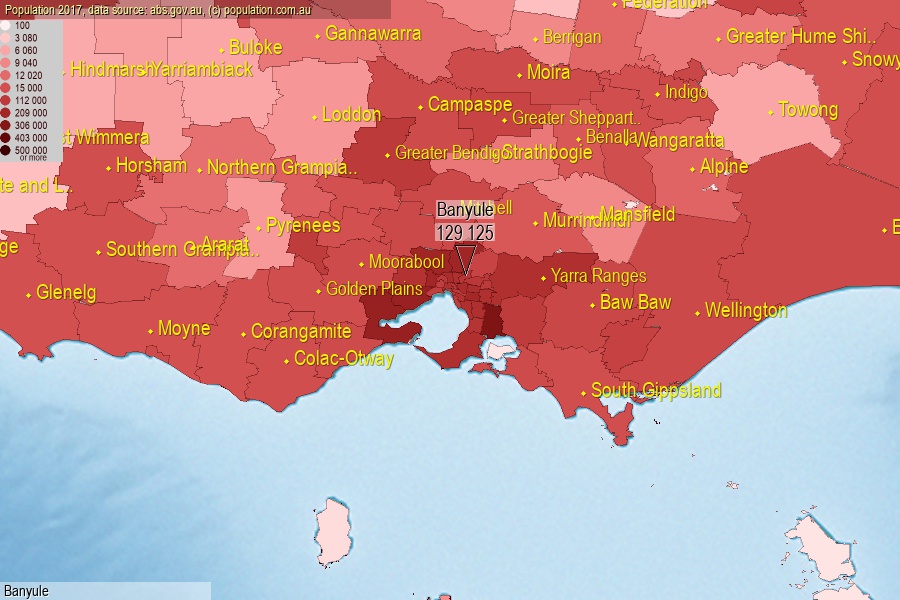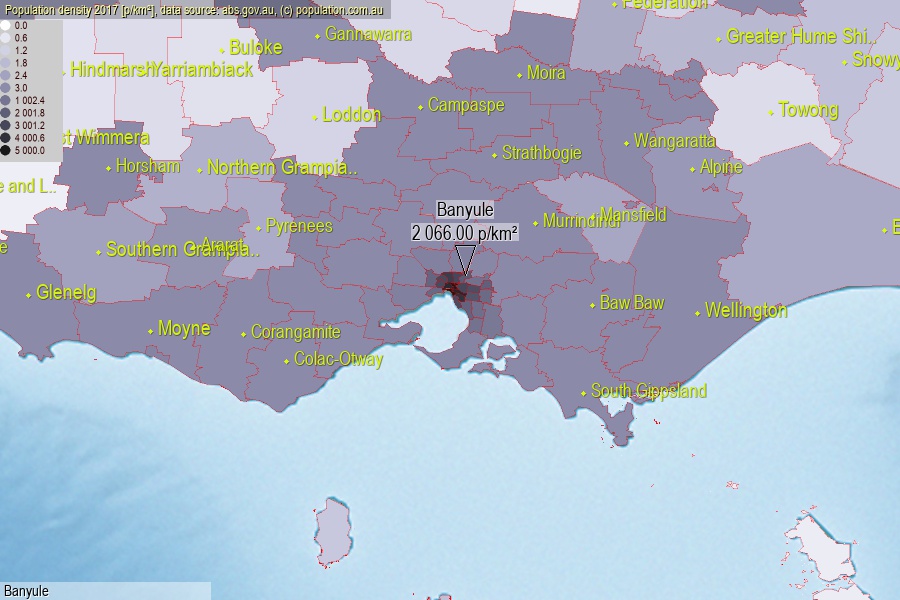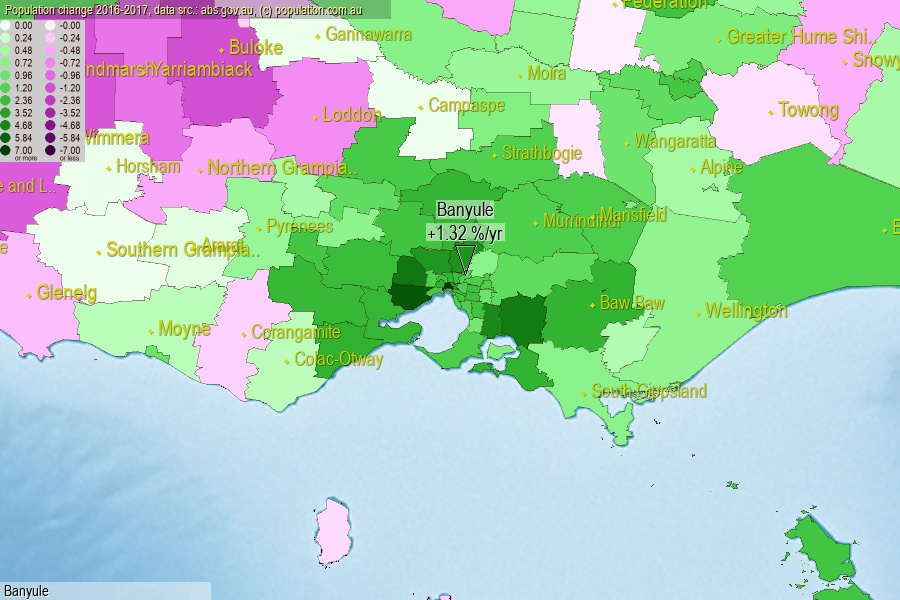 population.com.au
population.com.auLast official estimated population of Banyule City (as Local Government Area) was 129 125 people (on 2017-06-30)[2]. This was 0.52% of total Australian population and 2.008% of VIC population. Area of Banyule is 62.50 km², in this year population density was 2 066.00 p/km² . If population growth rate would be same as in period 2016-2017 (+1.32%/yr), Banyule population in 2025 would be 143 369. [0]



Click to enlarge. Banyule is located in the center of the images.
Population [people], population density [p./km²] and population change [%/year] [2]
[1996-2001] +0.01 %/Y
[2001-2002] -0.35 %/Y
[2002-2003] -0.21 %/Y
[2003-2004] -0.56 %/Y
[2004-2005] +0.42 %/Y
[2005-2006] +0.69 %/Y
[2006-2007] +1.19 %/Y
[2007-2008] +1.02 %/Y
[2008-2009] +1.38 %/Y
[2009-2010] +0.44 %/Y
[2010-2011] +0.17 %/Y
[2011-2012] +0.49 %/Y
[2012-2013] +0.59 %/Y
[2013-2014] +0.64 %/Y
[2014-2015] +0.78 %/Y
[2015-2016] +1.08 %/Y
[2016-2017] +1.32 %/Y
[0] Calculated with linear interpolation from officially estimated population
[1] Read more about LGA and Australian Statistical Geography Standard (ASGS) on abs.gov.au
[2] Population data from Australian Bureau of Statistics (Population and density: 2017; change: 2016-2017)
[3] Digital Boundaries: Australian Statistical Geography Standard (ASGS) 2016.